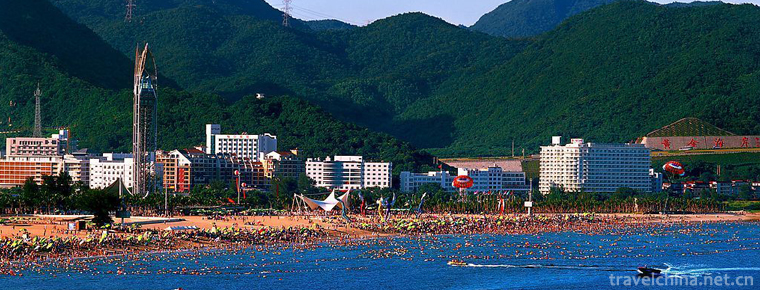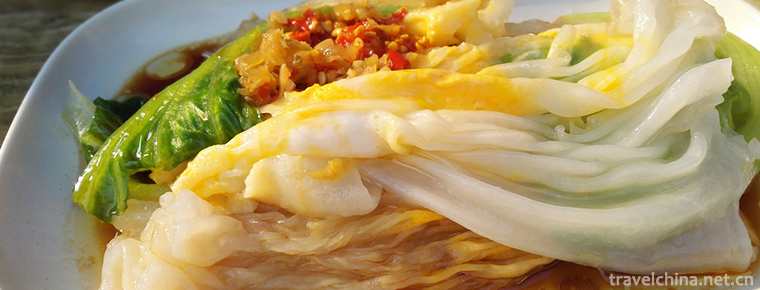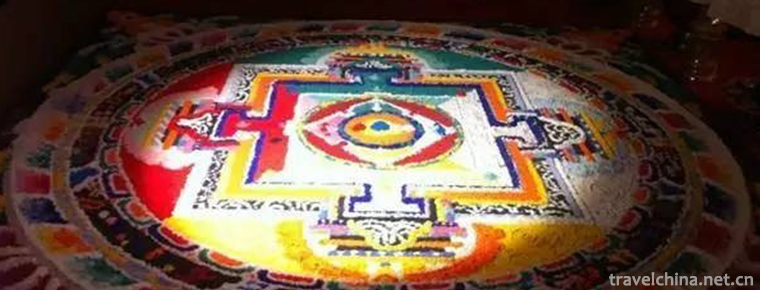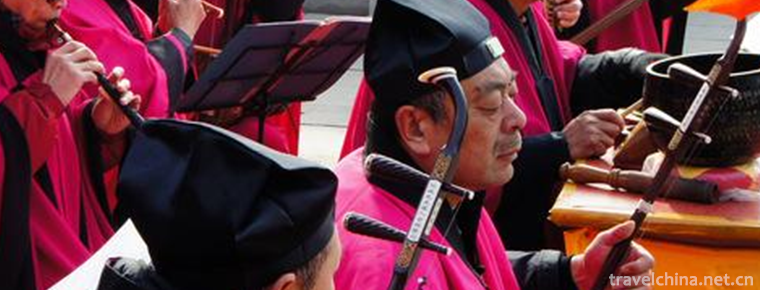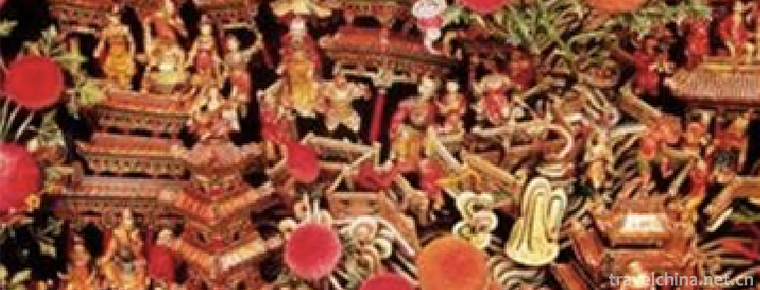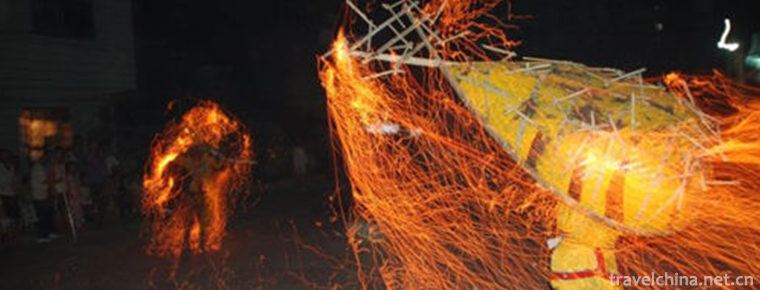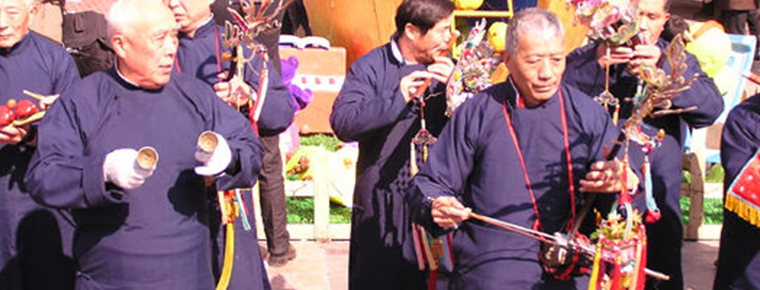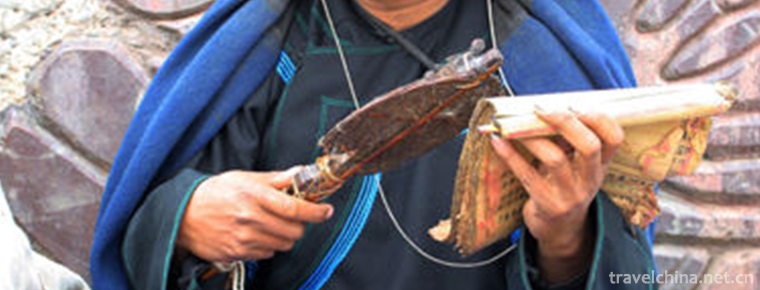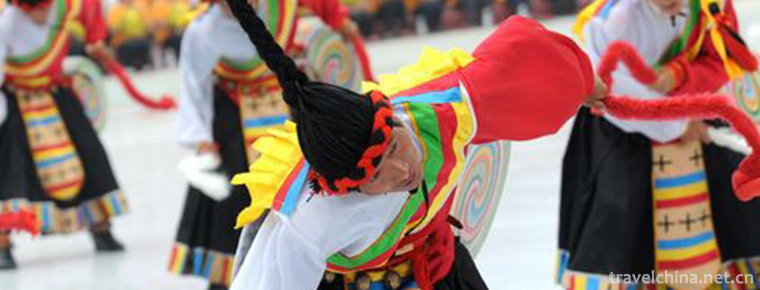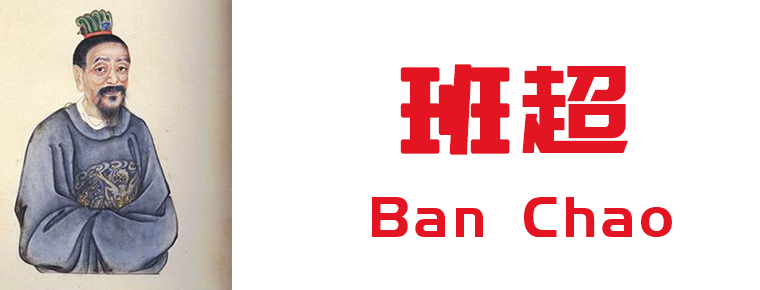Badang dance
Badang dance
Badang Dance is a kind of ancient folk dance, which originated from the ancient Qiang people's "Temple Festival" in Dingxi Minxian, southeastern Gansu Province. It is also a sacrificial ritual activity for local ancestors to pray for the coming year's smooth weather and abundant valleys.
On May 23, 2011, the Badang Dance declared by Minxian County of Gansu Province was listed in the third batch of national intangible cultural heritage list with the approval of the State Council.
historical origin
In some villages (towns) of Xiaozhai, Zhongzhai and Baozi in Minxian County, Gansu Province, an ancient collective dance of villagers is spreading. According to legend, Badang dance is a relic of Qiang and Tibetan culture, which was spread in Xuande period of Ming Dynasty. The word "Badang" is actually the dialectal pronunciation of the word "tiao", which is falsely passed down as Badang. Sow, that is, shake by hand. A snipe is a drum (hand drum).
artistic characteristics
Basic motion
The process of "Badang Dance" consists of "Anchang", "Jingshan God" and "Qijiele". "Anchang" is the first part of "Badang Dance". Under the leadership of "Chunba", the men of this village shake the long handle of "Badang Drum", sing the ancient Qiang language dance songs orally, and step on various steps. The formation begins to dance heartily and sing heartily. In the stage of security, the most common dancing steps are straight footsteps, Chunba Yang, Chunba Yang Sa, difficult to direct Yang Sa, male bus, difficult to get Ma Tan, Australian Ocean, Guai, Saai and so on. One kind of footwork, one kind of singing voice, the scene is solemn, warm, full of mystery. Anchang was followed by "Jingshan God". "Respecting Mountain God" is the most important part of "Badang Dance". At this stage, "Chunba" ignites a fire, leads dancers to "worship the Five Parties" and then dance heartily under the newly established swing. The footwork of "Jingshan God" is different from that of "Anchang". It mainly includes Aunaissa, Auda, Samuyang and Aoyou. The footwork of "Badang Dance" follows the "step song" of the Tang and Song Dynasties. The dance performance has a bright rhythm, strong clang and strong aesthetic sense. The singing is primitive and ancient, melodious and melodious, and full of strong Lyric interest. It is the concentrated expression of the unity and the struggle of the local people of Qiang, Tibet and Han nationalities. After the end of Jingshan god, it is the third part of "Badang Dance". All dancers begin to eat, drink and taste tea, and collectively perform Tibetan chorus. At the same time, they also sang wine songs, tea songs, and the crowd also participated in them, clapping hands or singing. Tibetan and Chinese are mixed together, with great momentum and magnificence.
Prop
The most important prop of "Badang Dance" is "Badang", which is a musical instrument created by the ancestors of primitive society by imitating sound, shape, audio and video. It is specially made of deerskin or sheepskin. "Badang" is an ancient musical instrument known as "Lei Huo", commonly known as "rattle drum" and "long handle drum", earlier than tanggu, hanging drum, waist drum, fan drum, about the diameter of Zhongzhai Guzhuang, Genzhen Road, Qiaojiagou, and other parts of the village community have one family. From textual research, "Badang" has a long history. In ancient times, "Badang" was a thing of gods, very noble. It was only used for dancing during the Spring Festival every year. The rest of the time was hanging on the wall. It could not be knocked at will. Otherwise, it would frighten the gods and bring disaster to the world.
train
In "Badang Dance", the most critical character is "Chunba". "Chunba" is a specially trained leader. They are the inheritors, inheritors and instructors of this ancient culture. One village is chosen and handed down from generation to generation. "Chunba" is the core of "Badang Dance". Before taking office, they should receive strict training in Tibetan Badang Dance Music and footwork. It is an important duty of Chunba to train "Chunba". Every year from December 2nd, the "Chunba" gathers men from all families in the village to divide their work, teaches them dance steps, beating skills of "Badang" and some lyrics, and rehearses the "Badang Dance". Since then, the annual grand celebration has begun.
Inheritance status
In 2004, Dingxi Baihua Performing Arts Co., Ltd. brought this ancient folk dance onto the stage and participated in the provincial program performance with cultural characteristics, which aroused repercussions.
In 2005, "Badang Dance" participated in the provincial Spring Festival Gala and was well received. Since then, "Badang Dance" has appeared in various literary and artistic performances, and is deeply loved by the audience.
In May 2011, "Badang Dance" was listed in the third batch of national intangible cultural heritage.
In September 2014, "Badang Dance" as the only drama in our province participated in the 12th China Folk Literature and Art Mountain Flower Award evaluation activities. It stood out in the fierce competition with its ancient primitive beauty, wild beauty, masculine rhythm beauty, melody beauty, unique regional style, distinct national characteristics and exquisite stage performance.
Inheritance significance
Badang dance, as an ancient folk dance, is the crystallization of the long-term labor wisdom of the working people and has great development value. It not only retains the extremely ancient primitive beauty and wild beauty, but also has the beauty of rhythm and rhythm of dance, full of masculinity. At the same time, Badang dance is also a symbol of national unity and harmony of Tibetan, Han and Qiang nationalities.

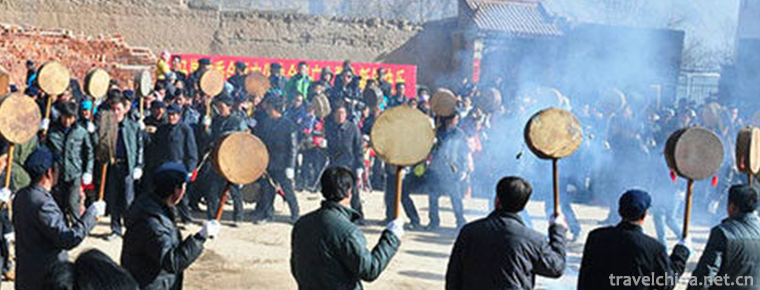
-
Dameisha Beach Park
Dameisha Beach Park was built on June 18, 1999 with a total investment of 120 million yuan.
Views: 230 Time 2018-10-12 -
steamed vermicelli roll
Intestinal powder originated in Luoding, Guangdong Province, has been spread throughout the country. According to geography (taste), it can be distinguished from the well-known .
Views: 397 Time 2018-11-02 -
Zhangjiakou Zhangbei Grassland
Zhangbei grassland is located in Zhangbei County, 70 kilometers northwest of Zhangjiakou. It consists of two grasslands, Zhongdu and Angoli. In Zhangbei grassland, you can ride horses and shoot arrows.
Views: 172 Time 2019-03-10 -
Painting of Painted Sand Tancheng
He said that if we compare life to a picture scroll, if the world wants to be detached from things and hearts, should it also laugh away the glory or frustration,.
Views: 361 Time 2019-04-04 -
Taoist Music
Taoist music is one of Chinese religious music. Taoist music is an indispensable part of Taoist rituals. It has the characteristics of foiling and rendering religious atmosphere, enhancing believers'y.
Views: 213 Time 2019-04-25 -
Sweat green
"Khan Qing Gele" is a heroic epic of the Mongolian people in Haixi. In the form of rap and speech, it tells the story of the Mongolian heroes destroying demons and saving the people, flashin.
Views: 207 Time 2019-05-02 -
Fire tiger
Fire tiger is a traditional folk dance form spread in Fengtai, Anhui Province. One of its greatest characteristics is the word "fire". Performers often wear tight, thick clothes and tie tige.
Views: 151 Time 2019-05-05 -
Jiangnan bamboo
Chinese traditional instrumental music, silk and bamboo, is popular in southern Jiangsu and Zhejiang. After the Revolution of 1911, great progress was made in Shanghai.
Views: 113 Time 2019-05-05 -
Lanxi stall spring
Lanxi Spring Spring Spring Spring is an ancient form of sitting and singing art, which was formed and popular in Lanxi area in the Midwest of Zhejiang Province, Jinhua and Quzhou, and belongs to Nanci.
Views: 150 Time 2019-05-10 -
Wool Textile and Rolling Techniques
Flower felt is the most popular among all ethnic handicrafts in Xinjiang, and it has a long history. Felt caps from the 1st to 3rd centuries A.D. are among the cultural relics unearthed at Lop Nur Lou.
Views: 271 Time 2019-05-25 -
Guozhuo Dance in Shannanchang
Shannanchang Guozhuo Dance is a kind of waist drum, which originated in Dabu (now Jiacha) area. Legend has it that in the mid-eighth century, with the help of Buddhist masters such as lotus and peanut.
Views: 164 Time 2019-06-13 -
Ban Chao
Ban Chao (32 - 102 years), the word Zhong Sheng. Fufeng County Ping Lingxian County (now) Shaanxi People in Northeast Xianyang. Eastern Han Dynasty Famous time Militarist Diplomats, historian Ban Bi T.
Views: 224 Time 2019-09-06
